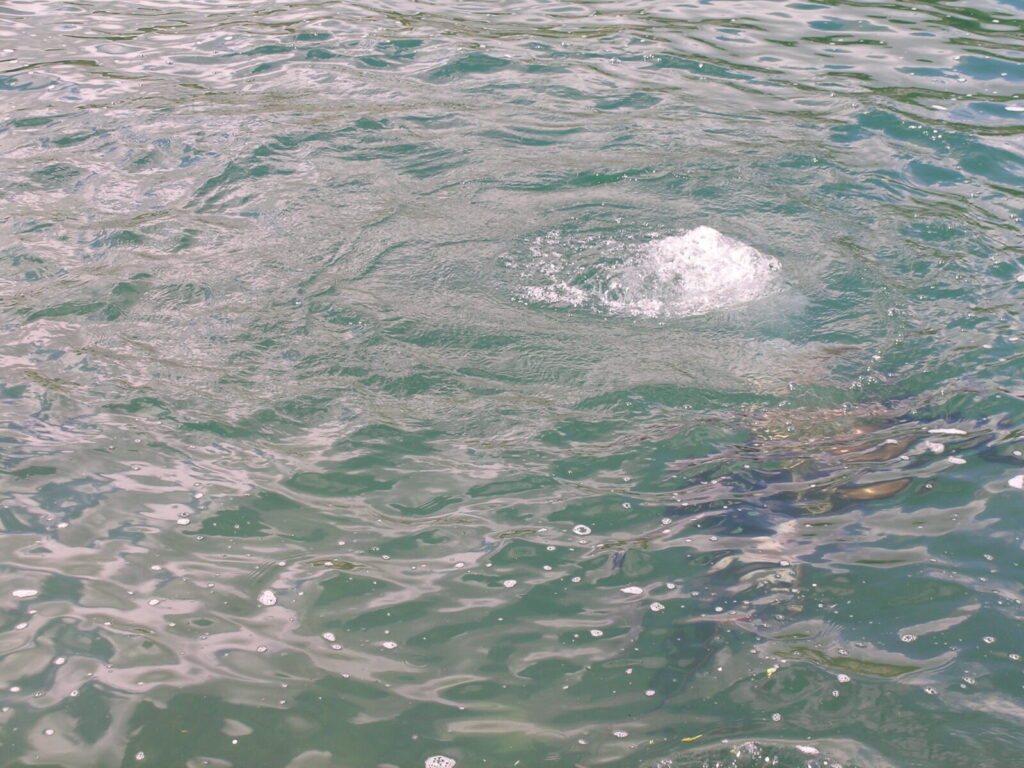The front page of this blog has me in what was known as Standard Dress, a hard hat diver’s working kit, something I had seen in movies since I was a kid.
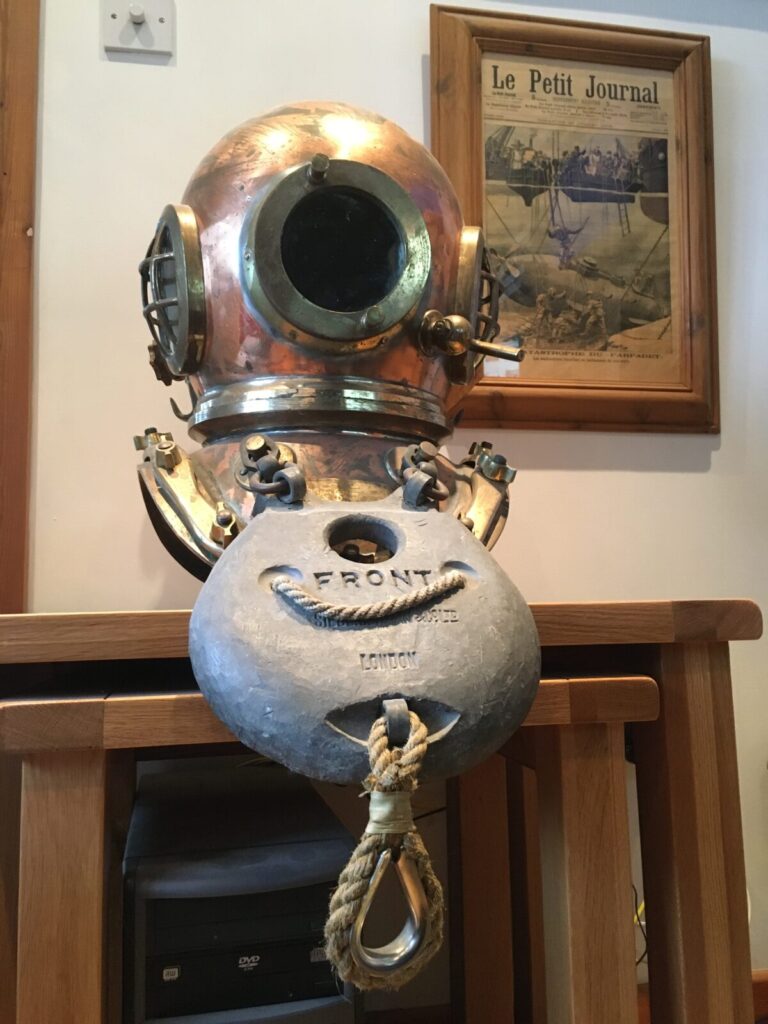
It is nothing short of miraculous what was achieved in this equipment over the years, once you have tried on the gear, and if you get the chance, as I did, dived this gear, it just makes you more incredulous, trust me! Those who worked under water back in the day were determined, strong willed and courageous people, have no doubt! The entry into the suit was the first challenge, achieved by climbing in through the neck, no front entry zips, no step-in from behind, just one leg after the other and then up over the body and arms and head follows……not for the claustrophobic!
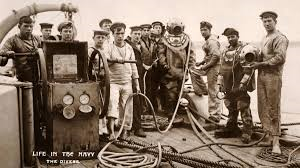
Many of the UK coastal wrecks of WWII were first visited by these divers sent in to remove sensitive documents from them, or to retrieve potentially useful information from enemy wrecks, often hours from the initial sinking under conditions that would have been horrendous to say the least. The image of a fully rigged diver, making their way through torn and mangled corridors and walkways into bridges ripped from battle damage, still carrying those who died desperately defending their ship to its end, is the stuff of nightmares, hero’s no doubt, and the stories of Lionel “Buster” Crabbe (RN) and, latterly, Navy Chief Carl Brasher (USN) have quite rightly gone down in history. For those with a thirst for knowledge I can personally recommend Kendall McDonald’s “The Tin Openers” full of stories like these but from WWI. If military diving is not for you then check out the story of William Walker the man who saved Winchester Cathedral, literally with his own hands, diving and repairing its foundations over 5 years from 1906 to 1911…….Or there are the early dives carried out in Wookey Hole around 1935 in Standard Dress, you can read more on that in “Wookey Hole 75 years of cave diving and exploration” (Hanwell, Price, Witcombe) or check out the video “Wookey Exposed” by Gavin Newman which again, I can personally recommend as brilliant stuff!
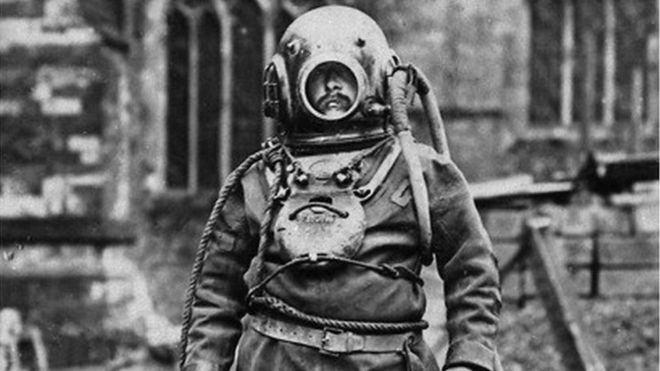
So let’s shift to Stoney Cove on the 15th June, a couple of days following my 53rd Birthday, I have been in touch with the Historical Diving Society over the previous 3 months or so and been lucky enough to be invited to dive at their annual outing on the Cove quayside. After gingerly helping them out of the van with various, priceless, items of what can only be described as beautiful and perfectly maintained “antique” diving equipment, it is time to get started….
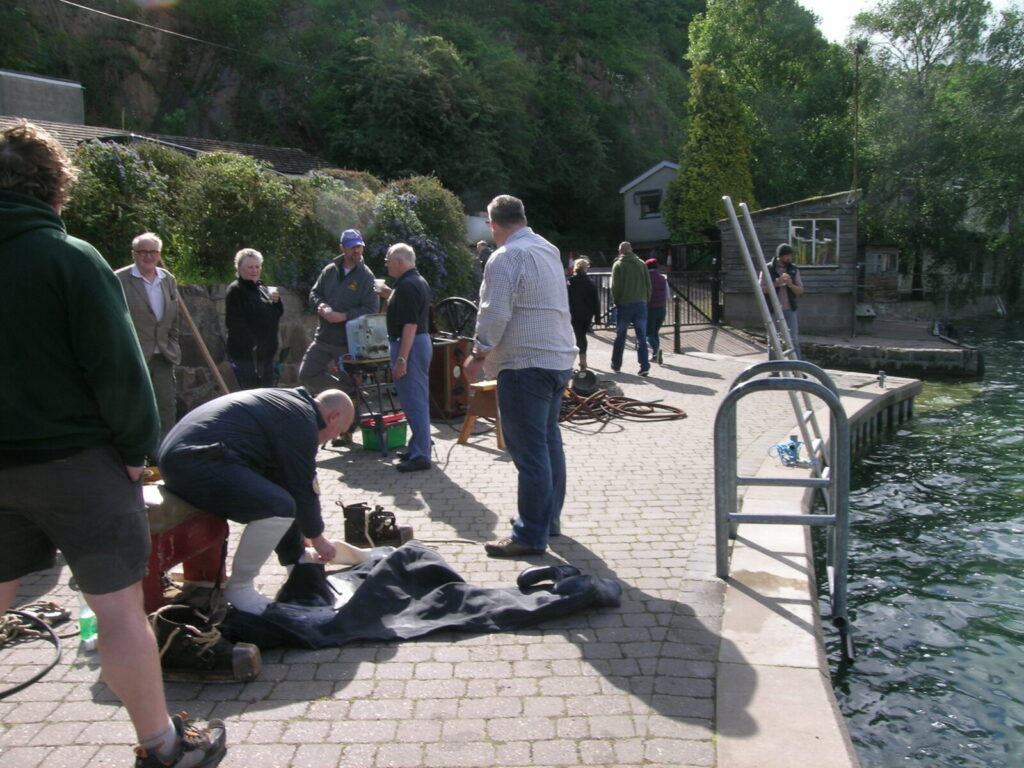
The equipment used is relatively simple in concept, a standing bellows pump, or dual pump depending on the make and age, the one we would use was a later, piston operated pump, is housed in a box which has hand driven wheels either side and operates the bellows via a crank shaft, eccentrically, allowing the bellows to fill and discharge fresh air down the air-pipe to the diver’s hard hat
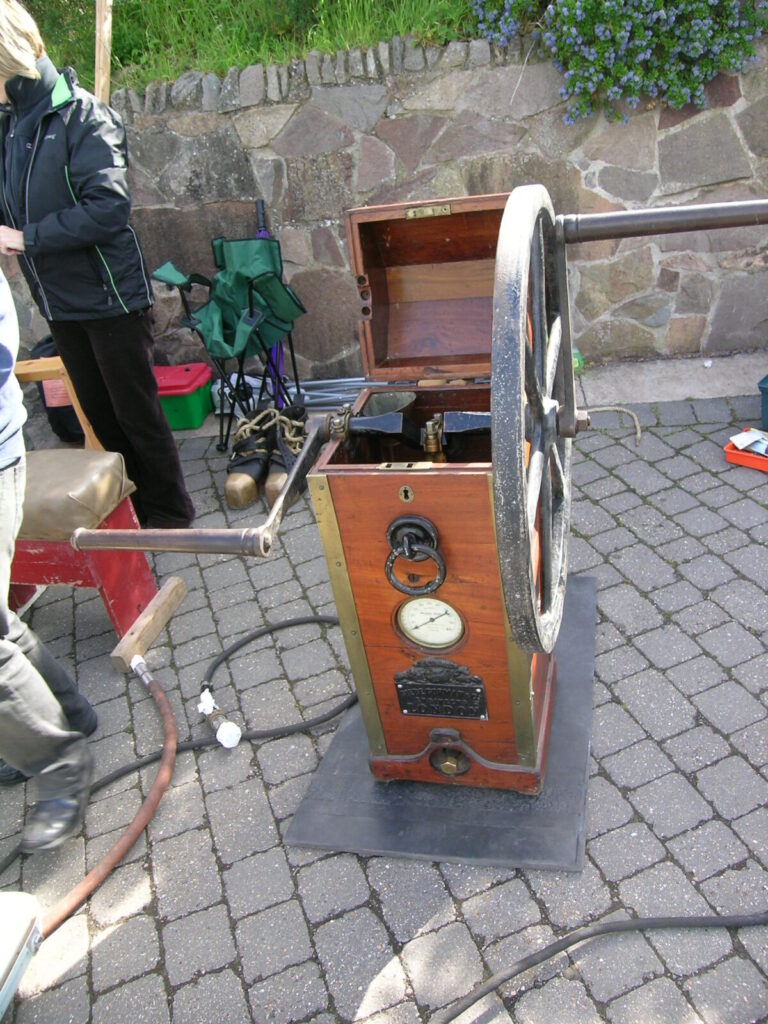
Once you get into the suit it’s time for the boots….these are more Herman Munster than “Berghaus” to be honest and would later prove very awkward on the rather rock strewn 6m shelf of the cove. I was fascinated to find them fitted using rope and they are a dead weight too, it helps to keep you upright on the sea floor as the Hard Hat is quite buoyant, but walking around is something only done out of necessity and the closer to the ladder you are, the better, simply stepping around onto the rungs takes concentration and no small amount of co-ordination too
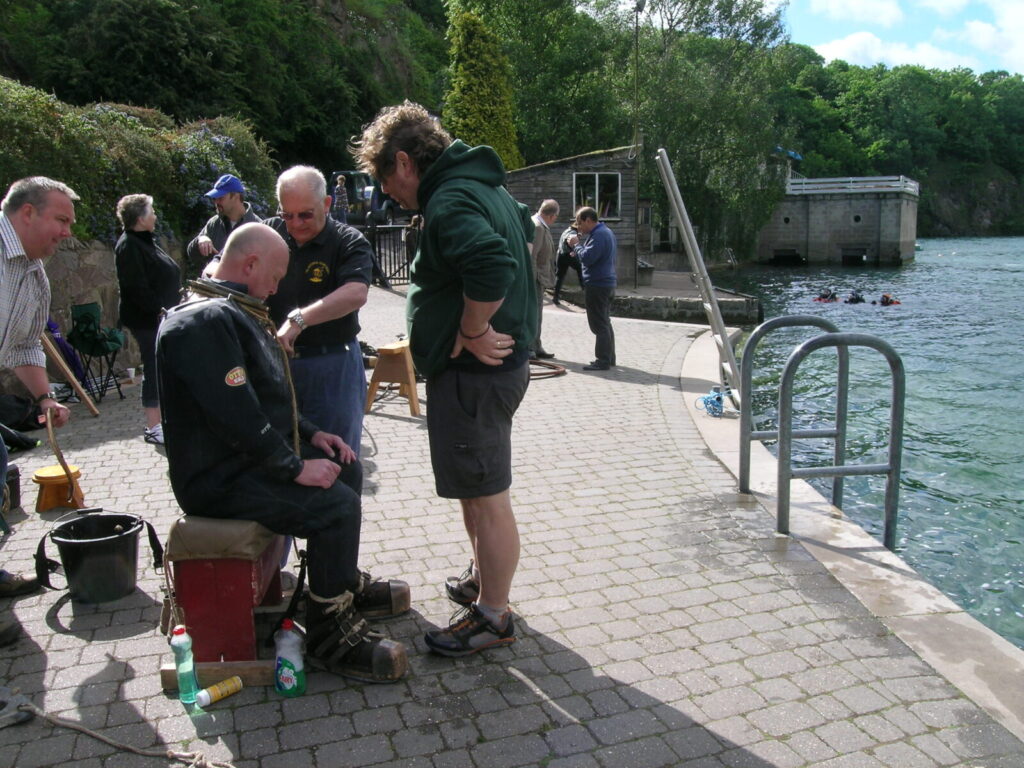
The corselet is fitted over the neck, it usually carries 4, 6, 8 or 12 “studs” and the outer rubberised neck on the suit opening fits over it via holes in the rubberised seam. The seam is clamped between the corselet and Copper bars, pressed over the studs it carries, but above the suit seam, and then wing style clamping bolts are tightened to seal the whole issue together. The corselet is mated to the helmet by a screw thread which is not around the entire rim, allowing the helmet itself to be dropped down and “twist locked” into the corselet, following which a locking bar is dropped between Two lugs on the back of the corselet
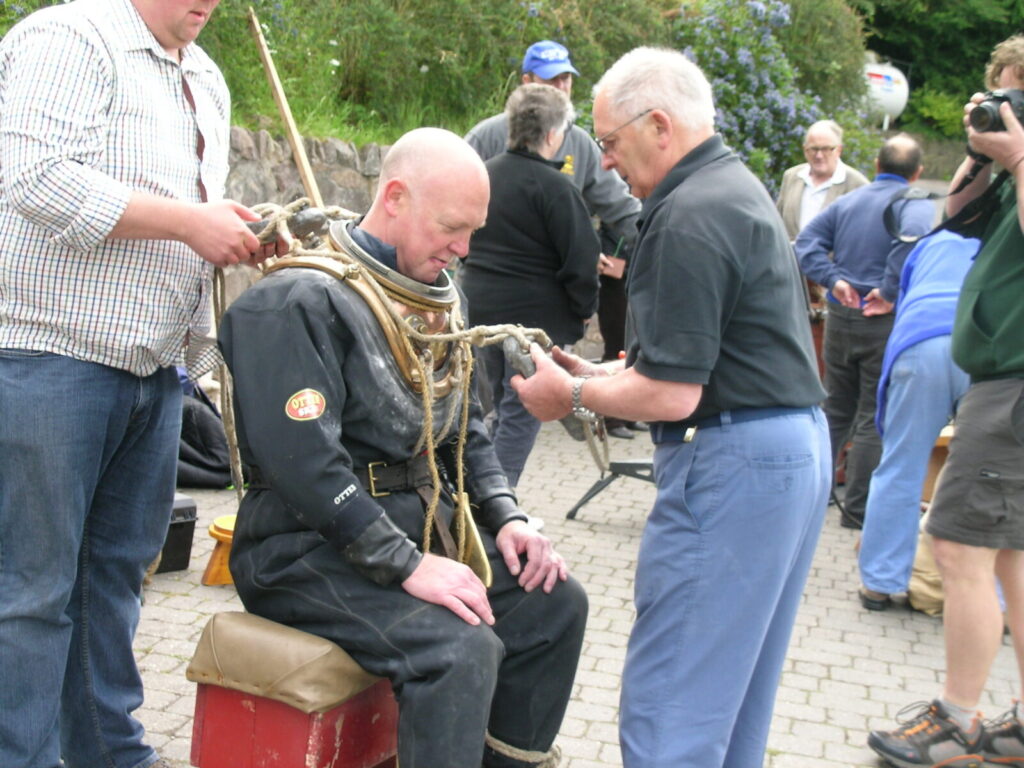
You can see on the photo above, the twist ring style helmet locking system, you can also see the front weight roped in place which adds to the stability of the upright diver when underwater, but also sits the corselet directly on the bones of the shoulders and “wrecks” until you get yourself fully underwater! In the background you can see, over my Left shoulder, the underwater communications box allowing “Top-Side” to communicate with the diver and the diver to acknowledge or report activity, the line to the Hard Hat are intertwined with the long air-hose which would, in latter days, incorporate a heated water pipe to keep the diver warmer in colder water commercial dives
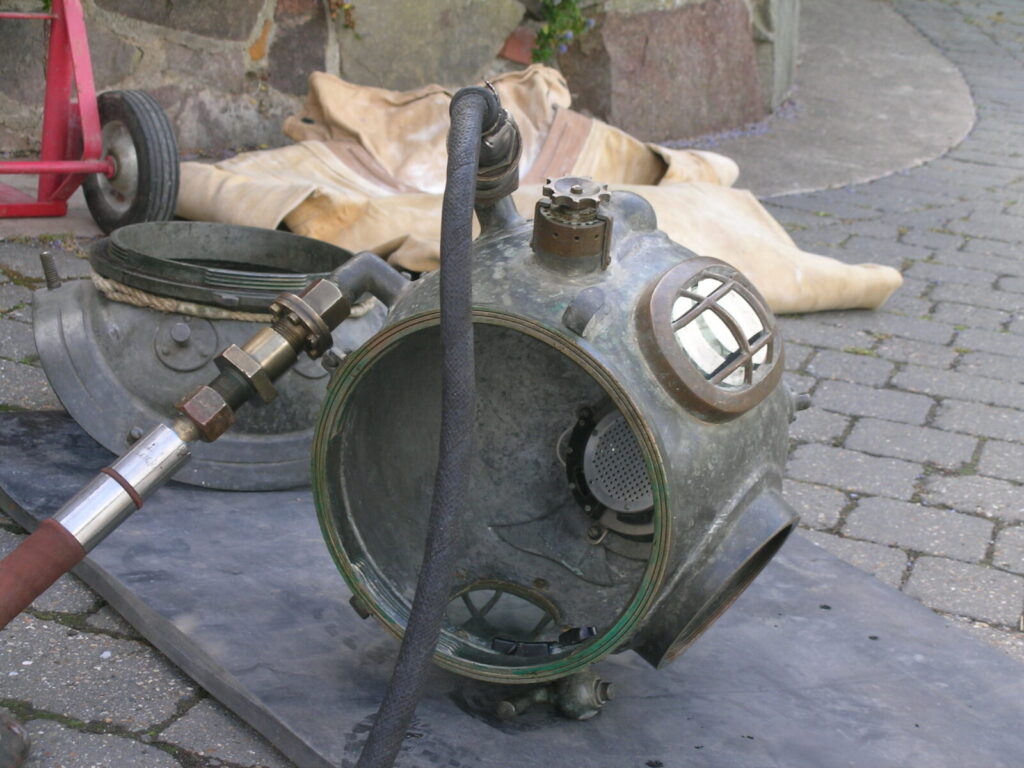
Putting on the helmet is a strange experience, the feeling is one of slight claustrophobia, mixed with amazement, and the surprise of how different it is to have to turn your head to see through the ports, something I really hadn’t expected to be so different from diving with a mask, but one that made perfect sense once you are actually “in there” isolated in your own, new, but kind of “little” Gold-Fish bowl world!
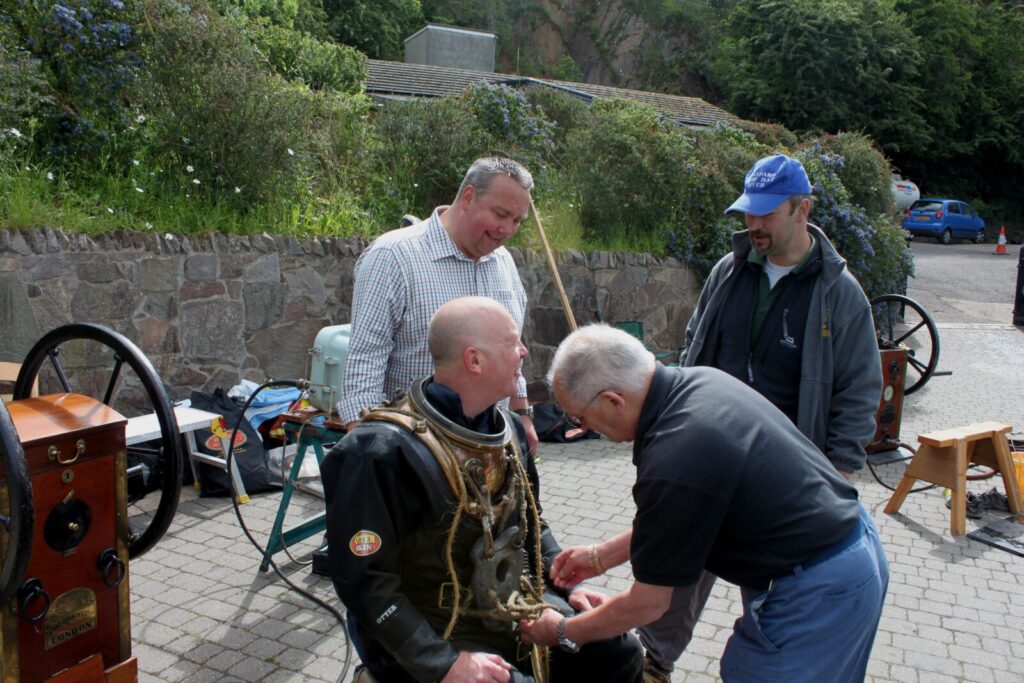
You can imagine, communication underwater is not something divers, sport divers at least, do on a regular basis. To have the ability to speak to someone whilst diving seemed somewhat bizarre and was definitely, to me at least, an afterthought. It was also odd having to use the hard hat exhaust to equalize the pressure, and adjust the buoyancy of the equipment too. There was never a problem breathing, and that too was odd, not having a regulator in your mouth whilst underwater was novel to say the least! So, fully kitted up I was assisted upright, steadied is more the case really, and I made my way slowly, stepping on very flat, heavy boots, to the ladder on the quayside fitted for the purpose by the team. I slowly but surely made my way down to the water, it was a maul, the relief once the buoyancy of the water began to surround me was intense and very welcome, it was a hot June morning and I was already sweating buckets!
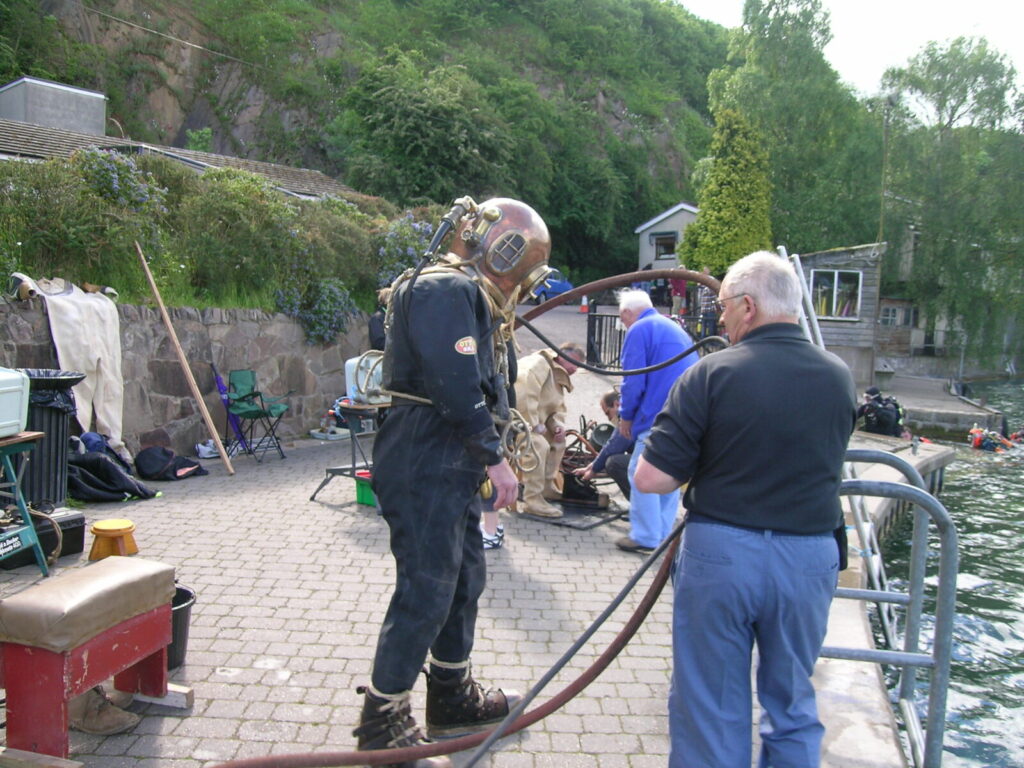
Climbing from the ladder at the bottom, turning around to see the 6m shelf stretch away in either direction made me stop and look and check what was in front of me, the boots were flat bottomed and if you stood on even a small-ish stone they tended to throw you forward or backward to begin with, I could see it was a completely different way to move around than on land. I found the easiest way was to have a little bounce in your step, but like anything else new, it was unnatural and somewhat ungainly as I made my way along the bottom to the extent the hose would allow
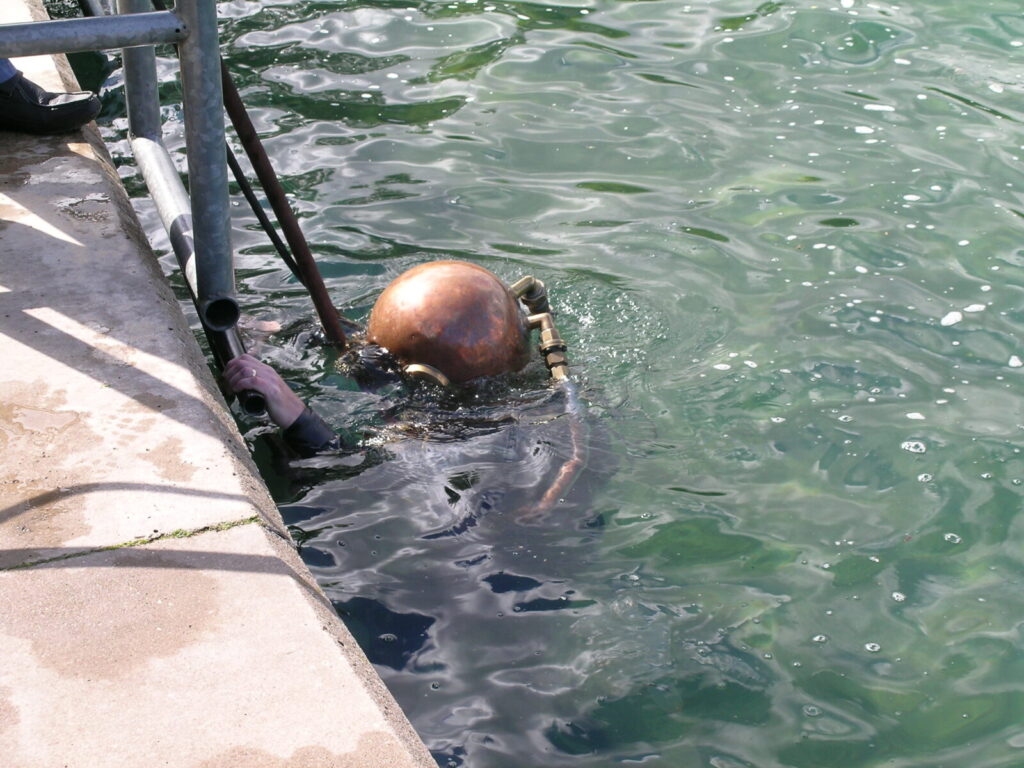
So, what was it like down there then? Well, to say it was different is an understatement, the limited freedom of being tethered by air and communication hoses was one thing, the different “feel” of standing and walking around the shelf was another. I enjoyed every minute of being under water in a completely new and unique way, however the limitations of the kit, and it’s new constraints and unfamiliar ways were definitely part of the experience. In truth, it just increased my admiration of those who used this kit to get into ships and submarines, and to explore caves and work on docks and piers and in complex salvage and military operations around the world, to wonderment!
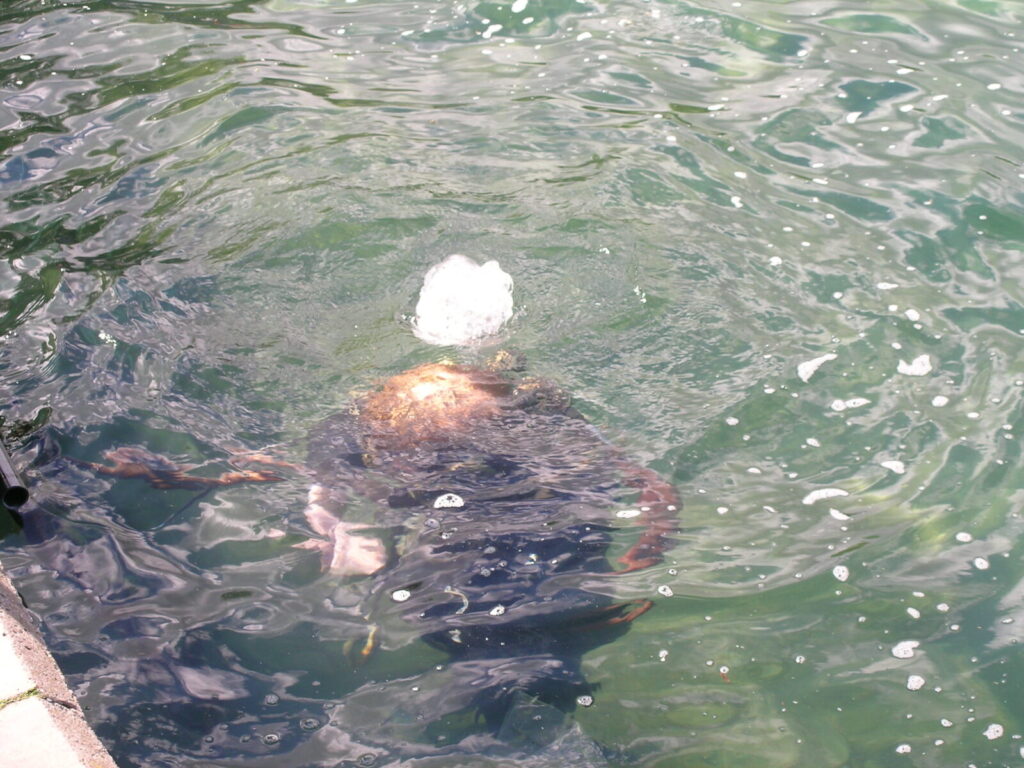
I guess the idiot grin shows how I felt about getting into the water and diving Standard Dress, the slightly more considered and thoughtful shot as I was de-kitted afterwards perhaps says it all, the kit is different, by a long way than any other I have used, the experience was awesome and I can’t wait to give it another go, but the overwhelming feeling was the utmost respect for those who did this every day, in some of the most harrowing and difficult circumstances imaginable. To have shared, even in such a tiny way, the feeling of diving their kit, was kind of overwhelming to be honest…..
